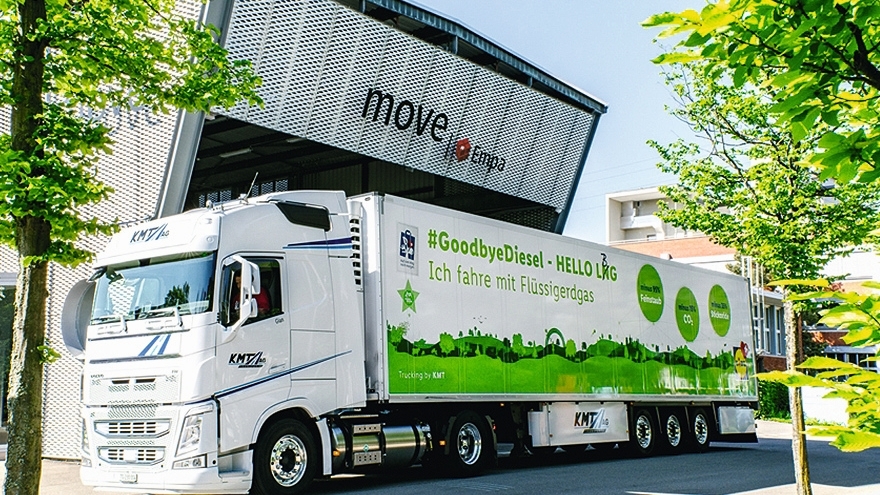Empa researchers are investigating the production of synthetic methane from an energy, technical and economic perspective in the "move" mobility demonstrator - a project with global potential.
Mobility analyses show: Only a small proportion of all vehicles are responsible for the majority of kilometers driven. We are mainly talking about heavy goods vehicles. Synthetic fuels make a significant contribution to such applications.
With electromobility, hydrogen mobility and synthetic fuels, Empa's mobility demonstrator "move" is investigating three technological paths toCO2 reduction in road traffic.
The latest project revolves around the production of synthetic methane from hydrogen andCO2 - so-called methanation. Such fuels produced artificially with renewable energy - called synfuel or syngas - can be transported via conventional routes and made available through the existing infrastructure.
The basic chemical process of methanation has been known for over 100 years as the Sabatier reaction. In "move", a process further developed at Empa is to be used: so-called sorption-enhanced methanation. It works as follows: Methane (CH4) and water (H2O) are produced from carbon dioxide (CO2) and hydrogen (H2) by means of catalytic conversion. TheCO2 for methanation as well as the water for the production of hydrogen is taken directly from the atmosphere on site using aCO2 collector from the ETH spin-off Climeworks. The system draws in ambient air and theCO2 molecules remain attached to the filter material. Using heat - around 100 °C - theCO2 molecules are then detached from the filter again.





